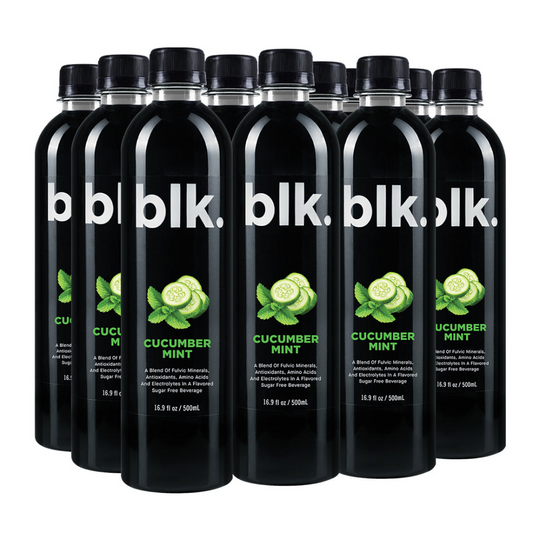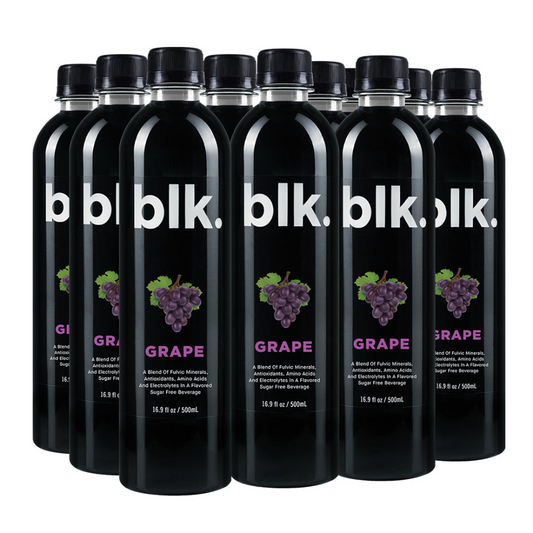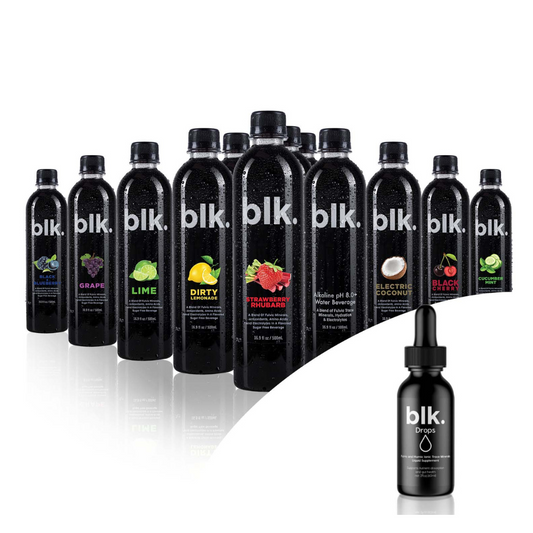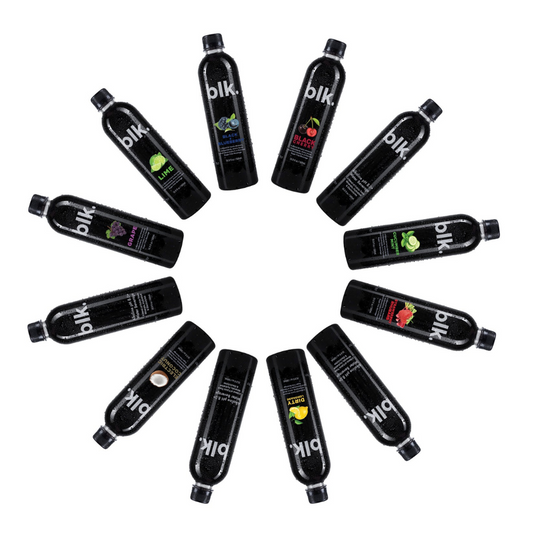
The Importance of Whey Protein and Meal Planning for Optimal Fitness
This Guide Seeks to Answer:
- How meal planning can help you achieve your fitness goals
- The benefits of combining whey protein with meal planning
- How to create good meal plans for achieving specific fitness goals
- Common mistakes to avoid when planning your meals
Optimal fitness means a stable mind and a healthy body. We all strive to maintain healthy body weight, build and maintain muscle mass, and improve cardiovascular endurance. And we try to gain it through regular exercise, healthy nutrition, and a balanced lifestyle. Nutrition is equally important in providing the necessary nutrients for muscle growth and recovery. Whey protein supplement is popular among bodybuilders and fitness enthusiasts for muscle growth and quick recovery. However, understanding how to incorporate it into a balanced meal plan is essential for achieving optimal fitness results.
In this blog, we discuss the importance of meal planning with whey protein for optimal fitness, including how to plan the meal by choosing the best food source and incorporating it into a balanced meal plan to support your fitness goals.
What is Whey Protein, and How Does It Benefit the Body
Whey protein is a milk-based protein obtained from whey or the liquid portion of milk left behind during cheese making. It qualifies as a complete protein and has all the amino acids the body needs. It has several benefits, including and not limited to promoting muscle growth and recovery, weight loss, lean body mass development, and blood sugar regulation. Athletes and muscle builders also use it for increased strength and better workout performance.
What are the Different Types of Whey Protein
There are three types of whey protein, i.e., concentrate, isolate, and hydrolyzed whey (whey hydrolysate).
Whey concentrate is the most common among the three and is usually included in baby formulas and protein bars. Even though it has a high protein content, it retains other milk properties, such as lactose.
Isolate is the purest of the three and has the highest protein content. It is obtained when whey is further subjected to intense processing and filtration to remove its lactose content.
The last type is hydrolyzed whey, a protein supplement obtained when whey is subjected to enzymes, heat, and acids to break off some of the bonds holding the amino acids together. It is digested faster than the other three, explaining why it is also known as pre-digested whey protein. However, whey hydrolysate can cause a significant spike in insulin when ingested.
How Do Whey Protein Impact Muscle Growth and Recovery
Whey protein is a rich source of protein, a nutrient known to impact muscle growth and recovery, thanks to amino acids such as BCAAs. Here is how whey protein helps with muscle growth and recovery:
Whey protein is a complete protein with all amino acids, including leucine, with the highest anabolic effect for promoting protein synthesis.
Amino acids bind to skeletal muscle proteins during protein synthesis leading to a potential increase in muscle size.
Whey protein reduces muscle damage by promoting muscle recovery after an intense workout.
Whey protein can be used as a secondary source of energy when amino acids are metabolized, mainly when muscle glycogen levels get depleted during workouts or endurance performance.
How Meal Planning Can Improve Your Fitness Goals
Meal planning can be defined as deciding on meals in advance based on your schedule, preferences, and goals to avoid making poor or unhealthy last-minute choices. It is a common strategy people use to lose weight or gain muscles. Let us discuss how meal planning can help you achieve your fitness goals.
Why is Meal Planning Important for Fitness
Makes it Easy to Watch Your Calories
Planning your meals in advance can help you avoid settling for high-calorie last-minute options. Remember, reducing your calorie intake is just as important as going to the gym and should therefore be prioritized.
Essential for Portion Control
Portion control is a powerful tool for those aiming to lose weight or develop lean body mass. Meal planning allows you to work out the portions that can help you reach your goals, allowing you to plan your meals ahead.
Helps in Time Management
Most people who use meal planning to achieve their fitness goals usually plan their meals even seven days in advance. This saves them time that could be wasted thinking about what to eat or going grocery shopping. In short, planning and organizing meals in advance results in fewer last-minute decisions, making meal planning an effective time management tool.
Reduces Food Wastage
Meal planning requires people to obtain only what can help them achieve their fitness or health goals. The foods and ingredients obtained must also be used as soon as possible to prevent waste.
Budget Friendly and Saves You Money
Meal planning reduces impulse buying, which is one of the main contributors to reckless spending. It also reduces food wastage as nothing ends up in the bin. Lastly, meal planning reduces eating out or getting takeaways, allowing extra money to stay in your pockets.
Exposes You to a Variety of Food Options
Planning meals in advance gives you time to think about the different options you can have, saving you from cooking one meal repeatedly. You can find the best fruit or vegetable options to spice up your meals instead of eating foods rich in one or two nutrients daily.
Promotes Healthy Eating
Deciding on meals in advance helps you avoid making unhealthy decisions, such as picking a bucket of wings or chicken with saturated fats on your way home after work. Knowing that you have a healthier option waiting for you when you get home can help you exercise restraint.
How to Create a Meal Plan That Supports Your Fitness Goals
Creating a meal plan that supports your fitness goals should be easy. All you need to do is decide the meals to plan for, look up healthy recipes, make an in-depth grocery list, and prepare meals on Sunday, which several people consider their resting day. Remember to separate the meals in containers after prepping them to give you a relatively easier time.
Common Mistakes to Avoid When Meal Planning
Ensure that you are outstanding by avoiding the following mistakes:
- Ignoring the Food, You Already Have: One of the aims of meal planning is to reduce wastage; therefore, ignoring or letting the healthy food options you already have go to waste would be counterproductive. Your meal planning should be centered around what you already have. You don't have to grocery shop when your pantry is still full.
- Don't Follow Someone Else's Plan: Even though it's okay to be inspired by someone else's recipe, what works for them may not work for you or your family if you have one. You should only consider what you need as a person when planning your meals.
- Don't Try To Do It All: You don't have to plan out every meal to the littlest details or cook every night of the week to make your plan succeed. Try as much as you can but do not beat yourself up or over-squeeze if you are not in a position to.
All in all, make sure that the meals you settle on are healthy options to help you achieve your goals, such as losing weight or gaining muscles.
The Best Foods to Include in Your Meal Plan For Maximum Whey Protein Benefits
It's essential to include a variety of foods in your meal plan to allow your body to benefit from several nutrients and get the best out of whey protein supplementation. Some of the best options include
Foods Rich in Whey Protein
You can include foods rich in whey protein like include goat milk, cheese, protein bars, yogurt, and cow milk in your meal plan,
High Protein Foods
High-protein foods supply the body with amino acids, which are needed for several functions, such as breaking down food, making hormones and neurotransmitters, and repairing body tissues. Some of the best high-protein foods to include in your meal plan include eggs, chicken breasts, turkey breasts, lean meat/beef, shrimp, fish such as salmon, haddock and flounder, chickpeas, and specific types of beans such as black beans.
Healthy Fats and Carbohydrates
You need to include healthy fats and carbs in your meal plan to enjoy a balanced diet or low-carb diets such as South Beach, Keto, Paleo, and Atkins; Include healthy fats such as avocado, chia seeds, eggs, fatty fish, dark chocolates, nuts, and virgin oil and healthy carbohydrates such as dairy, legumes, and whole grains in your meal plan.
Importance of Fiber in Your Meal Plan
Your meal plan should have dietary fiber, which is non-digestible carbohydrate classified as soluble and insoluble. Some of the best sources of dietary fiber include avocados, bananas, carrots, broccoli, and lentils. Fiber offers the body a natural detox, helps lose or keep a balanced weight, and improves digestive health. Other benefits include a potential decrease in cholesterol or blood sugar levels after a high-carb meal.
How to Incorporate Whey Protein into Your Meal Plan?
Best Time to Consume Whey Protein
The best time to consume whey protein depends on your goal. If you intend to lose weight, take whey protein in the morning and between meals to take advantage of its satiating effect. For enhanced muscle gain and recovery, consume it as either a pre-workout or post-workout.
Whey Protein Recipes to Try
Chocolate Flapjacks
To make chocolate flapjacks, get some honey, porridge oats, chocolate protein spread, 1-2 scoops of whey protein powder, and semi-skimmed milk. Next, mix the honey, milk, and oats into a bowl before microwaving the mixture to dry. The next steps are: spooning the mixture into a baking tray greased with baking paper, flattening the oat mixture into the tray corners, melting the chocolate spread in a separate dish and mixing in the protein powder, and then spooning the chocolate mixture on top of the oats. Lastly, freeze the mixture for 2-3 hours and slice them when ready.
Whey Protein Salted Caramel Frappe
The ingredients needed to make a whey protein caramel frappe include ice, drizzled sugar-free syrup, espresso coffee, protein powder, low-calorie whipped cream, and skimmed milk. Once you have all the ingredients, add them into a blender and blend till smooth and creamy, then serve and top with whipped cream.
Meal Planning for Specific Fitness Goals
Some fitness goals warrant meal planning, including weight loss, muscle gain, and endurance training.
Meal Planning for Weight Loss
To lose weight, you should include leafy greens, salmon, cruciferous vegetables, lean meats, tuna, root vegetables, and soups in your meal plan. It's also wise to avoid including lots of carbs or high-calorie foods as they can stall your weight loss journey.
Meal Planning for Muscle Gain
You should include the following foods in your meal plan to gain muscle: eggs, chicken breast, Greek yogurt, soybeans, cottage cheese, turkey breast, tilapia, quinoa, scallops, and peanuts; in short, include foods with super high protein content necessary for gaining muscle.
Meal Planning for Endurance Training
Endurance athletes are generally advised to include the following foods on their meal plans: black rice, edamame salad, beans, chicken, homemade instant oatmeal, lentil, salmon, snow peas, spinach, fish, and eggs.
Tips For Sticking to a Meal Plan
Some of the tips that can help you get the best out of your meal plan include:
- Using an App to keep track of what you eat and when to eat
- Being creative in recipes and presentation of your meal
- Making your meal plan public for commitment purposes.
- Not letting guilt consume you if you slip
Conclusion
You can easily achieve your fitness goals through meal planning and whey supplementation. Whey is a rich protein source with weight loss and workout improvement properties, while meal planning helps people make healthy choices for weight loss and lean muscle development. However, select foods rich in protein, healthy fats, and low carbs content.
Frequently Asked Questions
-
Is It Better to Have Whey Protein Before or After a Workout?
-
What Are The Best Whey Protein Brands?
-
Can I Consume Too Much Whey Protein?
-
Is It Necessary to have a Meal Plan for Muscle Gain?




